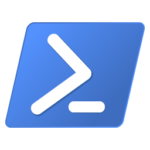We are pleased to announce the General Availability (GA) release of PowerShell Crescendo, a
framework to rapidly develop PowerShell cmdlets for common command line tools, regardless of
platform.
The release is now available for download on the
PowerShell Gallery.
Making Cmdlets with PowerShell Crescendo
Crescendo is a development accelerator enabling you to rapidly build PowerShell cmdlets that
leverage existing command-line tools. Crescendo amplifies the command-line experience of the
original tool to include object output for the PowerShell pipeline, privilege elevation, and
integrated help information. A Crescendo module replaces cumbersome command-line tools with
PowerShell cmdlets that are easier to use in automation and packaged to share with team members.
The GA release includes the following features and benefits:
- Ability to define cmdlets from simple
key/valuestatements in a JSON file - Support for modular design – cmdlet definitions can be in a one or more JSON files
- A JSON schema that helps you create your Crescendo configuration using IntelliSense and tooltips
- Three styles of output handling code allowing you to separate your code from the cmdlet
definitions for easier debugging and development - Privilege elevation mechanisms in Windows, Linux, and macOS
- Crescendo generates a PowerShell script module ready for deployment
- While Crescendo requires PowerShell 7 or higher for authoring configurations, the generated module
can run on Windows PowerShell 5.1 and higher - Example configurations for you to copy and reuse
- Experimental Help parsers that provide proof-of-concept examples for auto-generating cmdlet
configurations
Installing Crescendo
Requirements:
- Microsoft.PowerShell.Crescendo requires PowerShell 7.0 or higher
To install Microsoft.PowerShell.Crescendo:
Install-Module -Name Microsoft.PowerShell.CrescendoTo install Microsoft.PowerShell.Crescendo using the new
PowerShellGet.v3
Install-PSResource -Name Microsoft.PowerShell.CrescendoMore information
To get started using Crescendo, check out the
documentation.
Future plans
We value your ideas and feedback and hope you will give Crescendo a try. Stop by our
GitHub repository and let us know of any issues you find
or features you would like added.
The post Announcing PowerShell Crescendo General Availability (GA) appeared first on PowerShell Team.

